Apr 3, 2024 | Blog
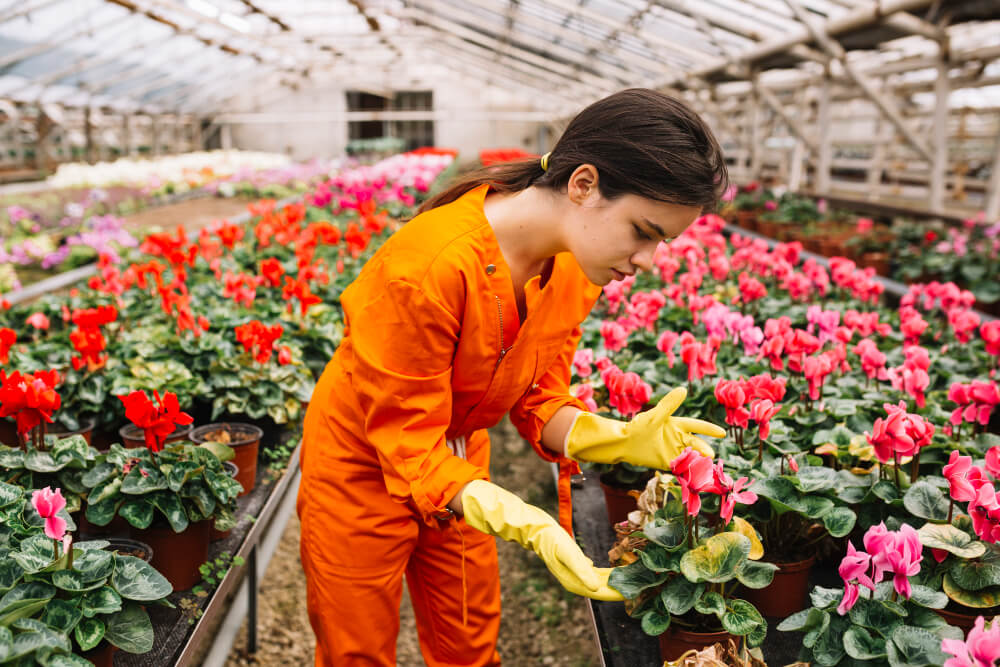
Floriculture, often heralded as the sunrise industry of India, is witnessing unprecedented growth, marking a significant transformation in the country’s agricultural sector. With an estimated growth trajectory set to reach USD 5.9 billion by 2030, floriculture in India is not just about cultivating and selling flowers; it’s a testament to the country’s rich biodiversity, climatic versatility, and the boom for flowers both domestically and internationally. This blog aims to discuss the essence of floriculture, its characteristics, importance, emerging trends, and the challenges it faces in the Indian context.
Introduction to Floriculture
Floriculture, a branch of horticulture, is an age-old farming practice that has evolved into a crucial agri-business across 140 countries, including India. It includes the cultivation of flowers and ornamental plants for commercial purposes. Floriculture caters to many sectors, such as cut flowers, potted plants, nursery plants, and the extraction of essential oils. India’s floriculture industry, with its vast floral diversity and extensive demand, is projected to grow significantly, driven by an environment-friendly lifestyle and the increasing acceptance of flowers in various cultural and social settings.
Characteristics of Floriculture in India
The floriculture sector in India is distinguished by its floral diversity, extensive demand, and favourable climatic conditions. The country’s vast land size and diverse climate offer an ideal environment for a wide variety of flowers and plants, contributing to its status as one of the top flower exporters.
States like Tamil Nadu, Andhra Pradesh, and Madhya Pradesh lead in production, contributing to nearly 50% of the total flower output. The industry caters to a growing domestic demand fueled by changing lifestyles, rising incomes, and rapid urbanization, as well as an export-oriented market with major destinations including the Netherlands, the UAE, the UK, and the US.
The Growth and Importance of Floriculture in India
The floriculture industry in India has seen significant growth due to favorable climatic conditions, rich cultural traditions, and government support through incentives and subsidies. Its importance extends beyond the economic, touching upon social, cultural, and environmental aspects. Floriculture contributes to employment generation and foreign exchange earnings and offers an alternative source of income for farmers, promoting rural development and environmental sustainability. Moreover, the sector is pivotal in cultural traditions, ceremonies, and festivals across India.
Emerging Trends in Floriculture
The Indian floriculture sector is experiencing a shift driven by changing consumer preferences, technological advancements, and the rise of e-commerce. Urbanization and the influence of Western cultures have increased the demand for floriculture gardens, leading to the development of more indigenous varieties and the adoption of innovative farming techniques like hydroponics and tissue culture. This diversification strategy is enhancing the yield and quality of flowers and catering to the rising demand for exotic and unique floral arrangements.
Challenges Facing Floriculture in India
Despite its potential, the floriculture industry in India faces several challenges, including a need for more information on cultivation techniques, obsolete technology, and inadequate infrastructure. The contribution of this sector to the global floriculture market is relatively small, highlighting the need for investment and government initiatives to address these challenges and promote sustainable growth.
Conclusion
The floriculture industry in India is at a pivotal juncture, with the potential to significantly impact the country’s economy, culture, and environment. As it embraces new technologies and sustainable practices, the industry is poised for further growth, offering opportunities for employment, innovation, and environmental conservation. With government support and a focus on overcoming existing challenges, floriculture in India can continue to flourish, contributing to the well-being of individuals and communities alike.
Floriculture in India is more than just the cultivation of flowers; it’s a vibrant industry with deep cultural roots, significant economic potential, and a bright future. As it continues to evolve, it promises to bring more color, fragrance, and beauty into the world while supporting sustainable development and enhancing the quality of life for millions.
Mar 5, 2024 | Blog
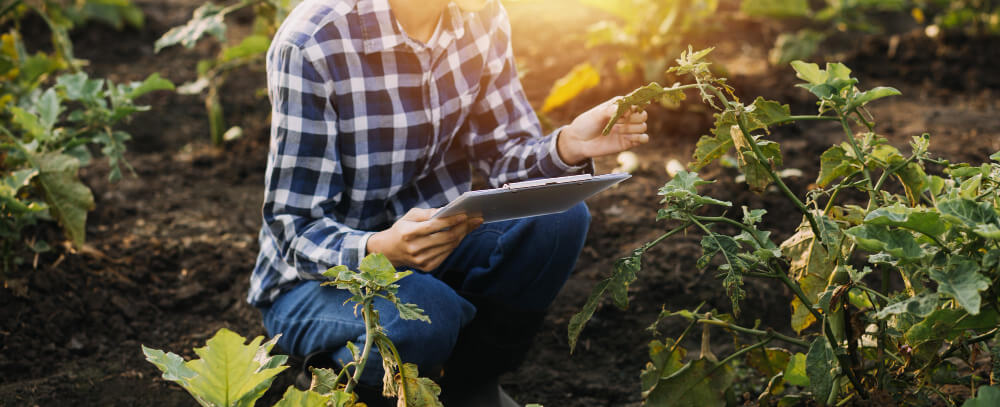
Agriculture is a cornerstone of India’s economic framework, engaging over half its workforce – approximately 54.6% – in various related activities. This sector substantially contributes to India’s Gross Value Added (GVA), accounting for 17.8%. The fiscal year 2021-22 marked a significant milestone in agricultural exports, reaching US $50.2 billion, a notable 20% increase from the previous year’s US $41.3 billion. Furthermore, forecasts for FY 2023 suggest a growth rate of 3.5% in the agricultural sector.
To enhance efficiency and productivity, the Indian government is spearheading technology integration in agriculture. A key initiative involves the deployment of sensors across farms. These sensors monitor and optimize water usage, fertilizers, chemicals, and pesticides. This move is part of a broader strategy to embrace intelligent farming solutions, including the recently announced drone scheme.
The Indian Council of Agricultural Research is at the forefront of developing affordable sensor-based technologies. These innovations are poised for rapid scaling and widespread adoption. Although currently utilized primarily in horticulture by the private sector due to cost factors, there is an ambitious plan to extend this technology to staple crops like cereals, pulses, and rice.
A notable example of this technological advancement in agriculture is the initiative undertaken by Jammu and Kashmir. The region launched a ₹30 crore project focused on sensor-based smart agriculture. This project aims to revolutionize cash crop cultivation through advanced polyhouses. It leverages the Internet of Things (IoT) and automation technologies to monitor and adjust the microclimatic conditions essential for plant growth. This strategic blend of traditional agricultural practices with cutting-edge technology underscores India’s commitment to farm innovation. It sets a precedent for sustainable and efficient farming practices, pivotal for the nation’s economic growth and food security.
Significance of Farm Data
Exploring the significance of data in Indian agriculture reveals its critical role in fostering more informed and efficient decision-making processes. This exploration is particularly pertinent for a readership well-versed in scientific and agricultural advancements.
- Decision making
In the agricultural sector, data analytics offers farmers profound insights. By examining both historical and real-time data encompassing aspects such as weather patterns, soil conditions, pest occurrences, crop yields, market trends, and consumer demands, farmers are equipped to make strategic decisions. This data-driven approach aids in determining the most viable crops, the ideal timings for planting and harvesting, and the reasonable allocation of resources.
- Identifying issues
One of the key benefits of data analytics in agriculture is its ability to pinpoint inefficiencies. For instance, the analysis can highlight the overuse or underuse of vital inputs like water, fertilizers, and pesticides. By aligning resource distribution with data insights, farmers can reduce costs, lessen environmental impact, and promote sustainable agricultural practices.
- Risk Management
Data analytics is crucial to risk management within agriculture. The ability to detect potential issues early and intervene timely can mitigate crop damage, avert financial losses, and contribute to food security. This aspect is not only beneficial for farmers but also for insurance companies and financial institutions. These entities can harness data analytics to develop tailored risk management strategies and insurance products, offering a financial safety net for the agricultural community.
Moreover, the analysis of extensive datasets enables researchers to discern patterns, correlations, and trends. These findings are instrumental in developing innovative farming techniques, enhancing crop varieties, and refining agricultural practices. Such advancements pave the way for the adoption of precision farming, intelligent irrigation systems, and other cutting-edge technologies. These innovations are vital in optimizing resource utilization and boosting agricultural productivity, marking a significant stride in the evolution of Indian agriculture.
In a nutshell, data analytics stands as a cornerstone in revolutionizing Indian agriculture, offering a pathway to more efficient, sustainable, and productive farming practices. This evolution is particularly crucial for a readership deeply engaged in the scientific and agricultural sectors, where such advancements are not only of interest but of paramount importance.
Data forms the Basis of the Fourth Agricultural Revolution
A transformative integration of advanced technologies characterizes the Fourth Agricultural Revolution. This paradigm shift encompasses the deployment of the Internet of Things (IoT), a network that interlinks innumerable physical devices globally, enabling seamless data exchange and analysis. This technological leap facilitates comprehensive insights into various agricultural aspects, such as detailed information on precipitation trends, water cycles, and specific nutrient needs of crops.
Moreover, the revolution harnesses the power of big data, offering agriculturists nuanced, data-driven insights that significantly enhance decision-making processes. This data-centric approach is pivotal in optimizing resource allocation and crop management strategies.
Artificial Intelligence (AI) is the flagbearer of this revolution, offering groundbreaking applications in crop cultivation. AI can conduct real-time monitoring, efficient harvesting, streamlined processing, and effective marketing strategies. This intelligent automation boosts crop yields and ensures sustainable farming practices.
The advent of robotic systems marks a significant milestone in agricultural evolution. These sophisticated machines are engineered to execute a range of tasks with remarkable precision, from ploughing and seeding to applying fertilizers and pesticides. Their introduction into the agricultural sector revolutionizes farming operations, significantly enhancing productivity and efficiency across the entire production chain.
This revolutionary approach in agriculture is not just a leap in technological advancement but a necessary evolution to meet the growing demands of a burgeoning global population, ensuring food security and sustainable agricultural practices for future generations.
Feb 1, 2024 | Blog
Gene editing is promising to create a sustainable agriculture environment. It is a robust technology that holds the potential to revolutionize how we approach soil health and, by extension, global food security and environmental sustainability. The blog aims to provide a compelling insight into how gene editing can be used to enhance soil health.
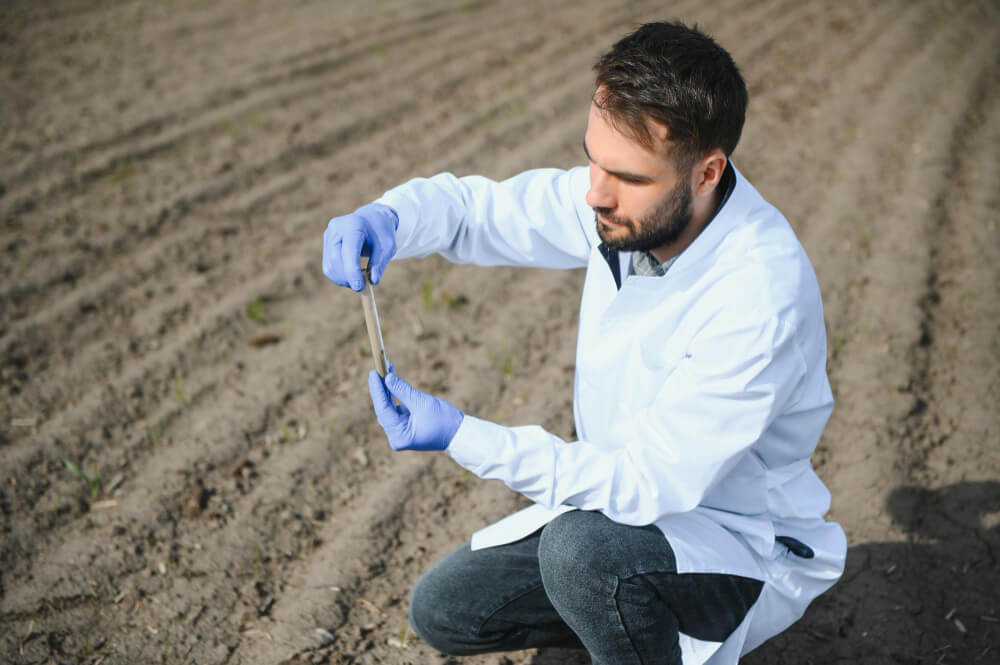
The Plight of Soil Health
Soil health is a vital component of our ecosystem. It’s not only about the dirt under our feet but also about a complex system that supports plant life, which in turn supports animal life, including humans. However, soil degradation is a global issue. Intensive farming practices, deforestation, and climate change lead to the erosion and depletion of topsoil, the fertile upper layer of soil crucial for plant growth. This degradation threatens food production and contributes to climate change, as unhealthy soil releases carbon into the atmosphere.
Gene Editing: A Ray of Hope
Gene editing, mainly through technologies like CRISPR, offers hope. By tweaking the genetic makeup of plants, scientists can develop crops with desirable traits that contribute to soil health. Modified roots can stay in the ground even after the crop is harvested, gradually decomposing and enriching the soil with organic carbon.
The Role of EXOCYST70A3 Gene
A fundamental discovery in this field is the EXOCYST70A3 gene, which regulates the architecture of the root system in plants. By editing this gene, scientists aim to create plants that have roots growing deeper into the soil, enhancing their ability to store carbon and improve soil structure. This not only aids in carbon sequestration, a crucial factor in combating climate change, but also enhances the soil’s ability to hold or retain water and nutrients, making it more fertile and resilient.
Managing Climate Change, Beyond Carbon Capture
The implications of gene editing in agriculture go beyond carbon capture. By creating crops with enhanced root systems, we can develop plants that are more adaptable to changing climate conditions, more resistant to pests and diseases, and more efficient in nutrient uptake. This means healthier crops, higher yields, and reduced need for pesticides and chemical fertilizers, leading to a more sustainable agricultural practice.
Gene editing in agriculture is not only about improving crop yields; it’s also a potent tool in the fight against climate change. The release of harmful greenhouse gases can be reduced by enhancing the plant’s natural ability to store carbon through tweaking of genes. This dual benefit of securing our food supply and mitigating climate change makes gene editing a critical area of research and development in modern agriculture.
Conclusion
The potential of gene editing in improving soil health and addressing broader environmental and food security challenges is immense. Innovations like gene editing offer a beacon of hope as we stand at the crossroads of a global food crisis and climate emergency. By harnessing the power of genetics, we can protect and restore the soil in different places and regions.
Dec 29, 2023 | Blog
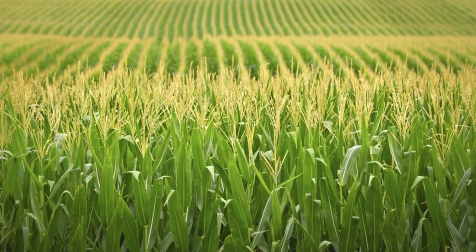
Cornfield with multiple rows of corn. Green and yellow
Bioenergy, sourced from organic materials rather than the prolonged geological processes that produce fossil fuels, emerges as a cleaner, more sustainable energy option. Anticipated to witness a notable rise in demand soon, bioenergy is set to significantly diminish our reliance on traditional fossil fuels.
The primary materials for producing bioenergy include crops such as wheat, corn, soybeans, and sugarcane, along with various waste substances. These sources are known for emitting lower levels of pollutants and greenhouse gases, including carbon dioxide, making them a greener choice compared to conventional fossil fuels.
This form of energy is expected to experience a substantial boost in demand shortly, marking a critical shift in our energy consumption habits. By adopting bioenergy, we can greatly lessen our dependence on standard fossil fuels, which are key culprits in environmental harm and climate change.
Bioenergy utilizes a range of crops and waste materials, making it a sustainable energy source. These include agricultural residues, forestry by-products, and municipal waste, offering a new purpose for these materials while reducing the overall environmental waste burden.
A major benefit of bioenergy is its reduced emission footprint. Bioenergy resources burn cleaner than fossil fuels, releasing fewer pollutants and greenhouse gases like carbon dioxide. The reason bioenergy is considered an eco-friendlier option lies in its carbon cycle balance. When bioenergy is produced through combustion, the amount of CO2 released is roughly equivalent to what the plants had absorbed during their growth phase. This equilibrium in CO2 levels contrasts sharply with the impact of traditional fossil fuels, which emit carbon dioxide that has been trapped underground for millennia, thereby exacerbating global warming. These characteristic positions bioenergy as a more sustainable and environmentally conscious choice compared to conventional fossil fuels.
Moreover, bioenergy can boost rural economies by providing new markets for crops and by-products and generating jobs in bioenergy processing and distribution. This economic boost is especially beneficial in rural areas, where economic opportunities are often scarcer. Let’s have a look at the most suitable crops for bioethanol production.
Corn
Corn is a leading bioenergy source, particularly for ethanol production. The process, akin to brewing beer, involves converting the sugar in corn into ethanol. Corn kernels are ground, mixed with yeast and warm water, and then fermented to produce ethanol. This ethanol is then blended with gasoline for use in modern car engines, emitting lower levels of carbon monoxide, nitrogen oxide, and sulfur than standard gasoline. Only the kernels are used because the plant’s cellulose is harder and costlier to process.
Rapeseed/Canola
Historically used for cooking and lighting, rapeseed oil is now a significant biodiesel source. Canola, a type of rapeseed with lower erucic acid, is more suitable for human and animal consumption. Canola’s low saturated fat content gives it an advantage in colder climates, and its high oil yield makes it an efficient fuel crop.
Soybean
Soybeans, versatile for both food and industrial products, are a major biodiesel source in the United States. Vehicles and machinery can run on pure soybean biodiesel or a blend with regular diesel. Soybean diesel is more energy-efficient than corn ethanol. One bushel of soybeans yields about 1.5 gallons of biodiesel. However, other sources like Canola and sunflower seeds have higher oil content, at 40% and 43% respectively.
Sugarcane
Sugarcane is another bioethanol source, with Brazil investing heavily in this sector. In the 1980s, most Brazilian vehicles ran on ethanol, but now they use flexible fuel engines. Sugarcane ethanol is significantly cheaper than corn ethanol. However, the practice of burning fields during sugarcane harvest releases substantial greenhouse gases, diminishing some of the environmental benefits of bioethanol.
Palm Oil
Palm oil, derived from palm tree fruit, is an efficient biodiesel source. It can be used in diesel engines without modifications and is less polluting than gasoline. Palm oil has boosted the economies of Malaysia and Indonesia, but its production has led to extensive rainforest destruction in these countries, threatening biodiversity.
Jatropha
Jatropha, a hardy and drought-resistant plant, is a significant biofuel source. Its seeds, containing about 40% oil, are used for biodiesel production. India, a major Jatropha producer, supports rural farming of this crop on otherwise infertile land. Jatropha plants can live for 50 years and are pest resistant. The seeds are processed for oil, while the remaining biomass can be used for fuel.
Conclusion
Bioenergy is a promising route towards a more sustainable, environmentally friendly energy future. Its reliance on renewable resources, lower emissions, and potential economic advantages positions it as an appealing substitute for fossil fuels. As we move towards sustainable energy solutions, bioenergy is likely to become a key player in the global energy scenario.
Oct 9, 2023 | Blog
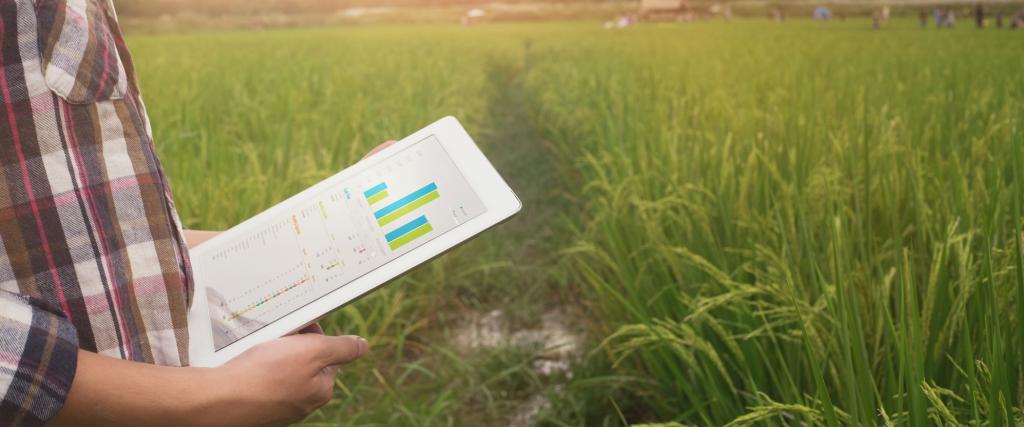
In the contemporary era, where the world is struggling to meet the challenges of food security and environmental sustainability, the issue of food wastage has garnered significant attention. With approximately 1.03 billion tonnes of food wasted annually, the need for technologies that can prolong the freshness of produce and minimize wastage is paramount. This article delves into various innovative technologies and platforms that are making strides in different segments of the food supply chain, directly from farms to fork, to mitigate the wastage of fruits and vegetables.
Pioneering Technologies at the Agricultural Level
Protective peel: The preservation of fruits and vegetables has been revolutionized by the development of plant-derived solution that forms a protective layer around the produce, significantly enhancing its shelf life. This innovation mitigates post-harvest losses and reduces dependency on refrigeration and controlled atmospheres, thereby minimizing energy consumption and environmental impact.
Full Harvest: Addressing the issue of “ugly” produce being discarded, A B2B marketplace that connects farmers directly with food organizations, supporting the sale of surplus and imperfect produce, thereby preventing wastage, and facilitating additional revenue streams for farmers.
Protective vapour: Innovative sachets, which release a shelf-life-enhancing vapour, are placed within the packaging of fresh produce, slowing down the ageing process and providing additional days or even weeks of marketability, reducing the likelihood of in-transit wastage.
Mitigating Wastage in Retail Environments
AI enabled shelf-life check: This innovation uses handheld devices and AI-driven software so that suppliers and retailers can predict the shelf life of fresh produce precisely. This technology aids in making informed decisions regarding inventory management, distribution, and pricing, thereby minimizing wastage.
Dynamic pricing: A dynamic pricing model utilizes machine learning to adjust the prices of perishable goods based on their expiration dates. This approach incentivizes consumers to purchase items closer to their sell-by date, reducing waste and optimizing revenue.
AI enabled inventory: AI is being employed to predict sales and optimize inventory management, this has significantly reduced supermarket waste, ensuring that perishable items are sold before they surpass their optimal freshness.
Technologies for Restaurants and Food Services
AI kitchen forecasts: AI-driven sales forecasting algorithms enable restaurants to predict sales accurately, facilitating optimal purchasing and preparation decisions, thereby significantly reducing food waste. Similarly, smart scales and AI cameras are being used in kitchens to monitor and analyze waste patterns. By understanding what is being wasted and why, kitchens can implement strategies to cut food waste, saving money and reducing environmental impact.
Consumer-Level Innovations
Consumer apps: Mobile apps are being used to bridge the gap between consumers and food establishments, enabling the latter to sell surplus food at discounted prices, prevent it from being discarded, and provide consumers with affordable meal options. These apps foster a community where neighbours and local businesses can share surplus food instead of discarding it. This approach not only reduces waste but also promotes community interaction and support.
Household Technologies
Home checks: The FridgeCam allows users to view the contents of their fridge remotely via a mobile app, enabling them to make informed purchasing decisions and plan meals effectively, thereby reducing the likelihood of food wastage.
Shelf-life extension: By absorbing ethylene gas, which accelerates the ripening of fruits and vegetables, the shelf life of produce can be extended, ensuring that it remains fresh for more prolonged periods, reducing the need for frequent shopping trips and minimizing wastage.
Conclusion
Technology integration into the food supply chain, from agricultural practices to consumer management, has demonstrated the potential to significantly reduce the wastage of fruits and vegetables. These innovations, which encompass various aspects of preservation, inventory management, dynamic pricing, and consumer engagement, are pivotal in addressing the global issue of food wastage. As the world continues to navigate the challenges of population growth, climate change, and food security, technologies will be prominent in ensuring that fresh produce is utilized effectively, minimizing wastage, and promoting sustainability.





